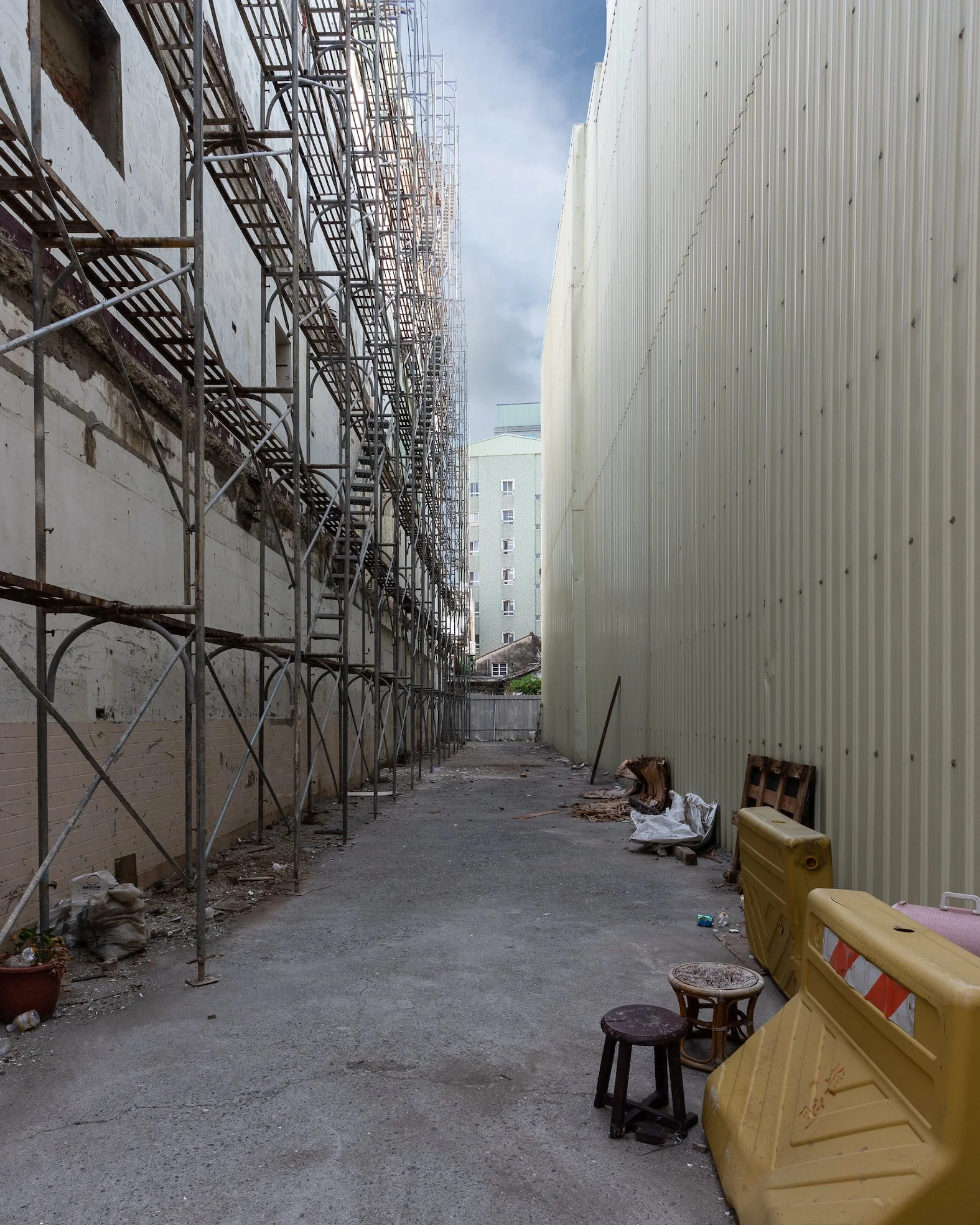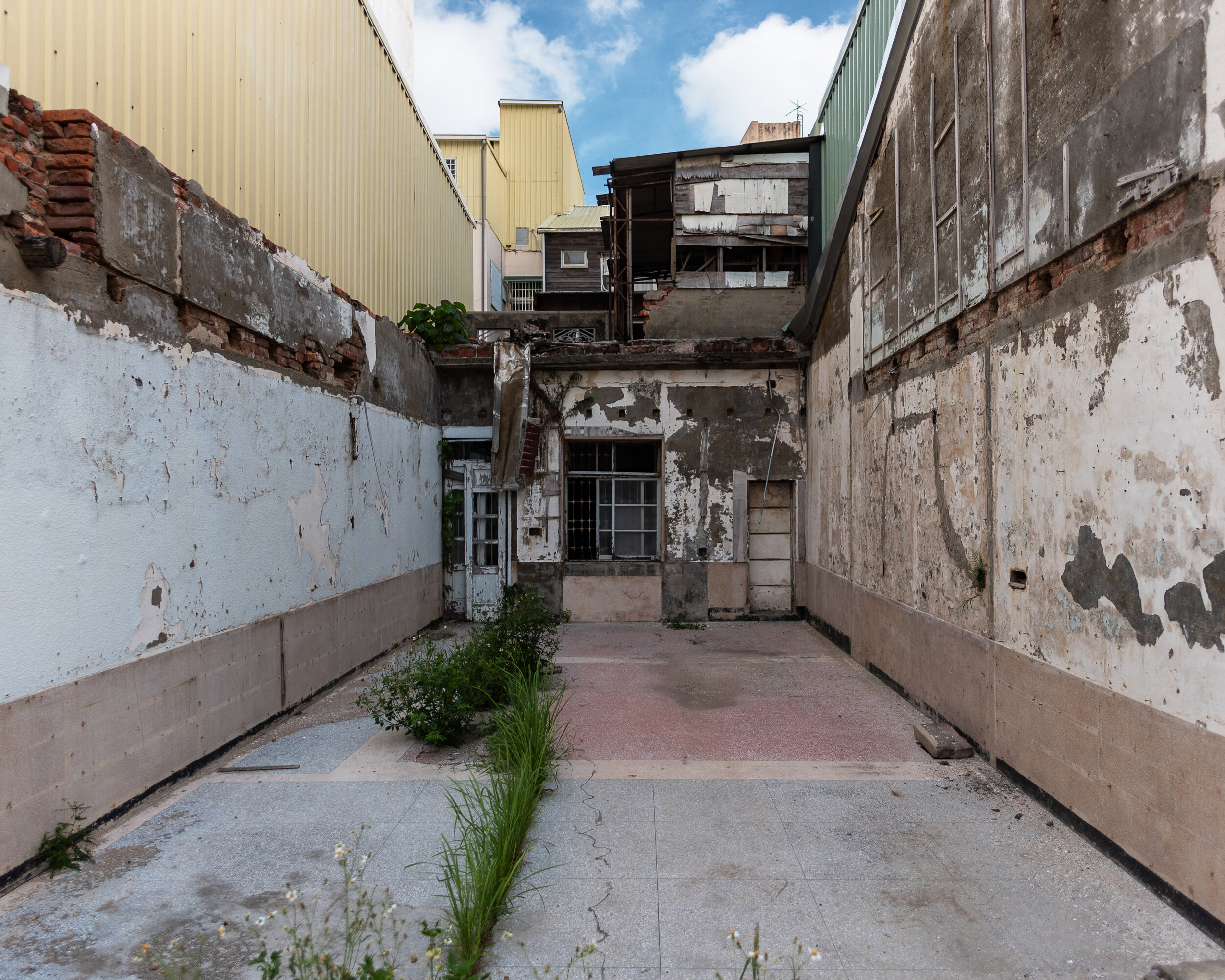
Homelands
I first spotted scenes shown in the photos above in Tainan and discovered why this kind of space appeared in the city. Tainan is the oldest city in Taiwan, and during Ching Dynasty, the city had already been the busiest city of trading for a long time. For commercial purposes, the houses were built very long and were adjacent one by one. In Japanese colonial time, many old buildings were reconstructed into diverse western- Japanese-Taiwanese styles, while some has never been rebuilt but demolished. Over the past 50 years, those buildings were once being rebuilt again. Most of them were replaced by taller and more modern houses in new styles.
Through the series of works, I want to highlight some issues I have been interested in and encourage viewers to reflect on our relationship with the outer world.
Firstly, the relationship between lands and humans, we humans cannot live without lands for food and shelter, and people of different cultures and races have different views and ways of treating them. After looking deeper into the context and the historical background of Taiwan, it is fascinating to see scenes like this and encourage people to reflect on how the relationship between humans and lands should be.
Secondly, I would like to use the composition to talk about the idea of “Home(Family)“ and “House“. Each of these lots was used for people’s houses, and we can imagine every part of the layout if we stand on these lots. It is also due to my personal question and experience. I have been thinking about the definition of a family, the purpose of buying a house, and how we should interact with the land.
After I moved to Kyoto, Japan, I accidentally noticed almost identical scenes in Kyoto. The similarity excited me, and I later found that traditional Japanese houses in Kyoto ( 京 町 家 ) are pretty similar to old houses in Tainan, with some purposes for commerce and a lengthy historical background. Also, by comparing photos, we can still find out how people of the two countries treat those vacant lots in different treatments, like the pavement of the lots or the reinforcement on walls of adjacent houses.
Human - Home - House
Family - Land


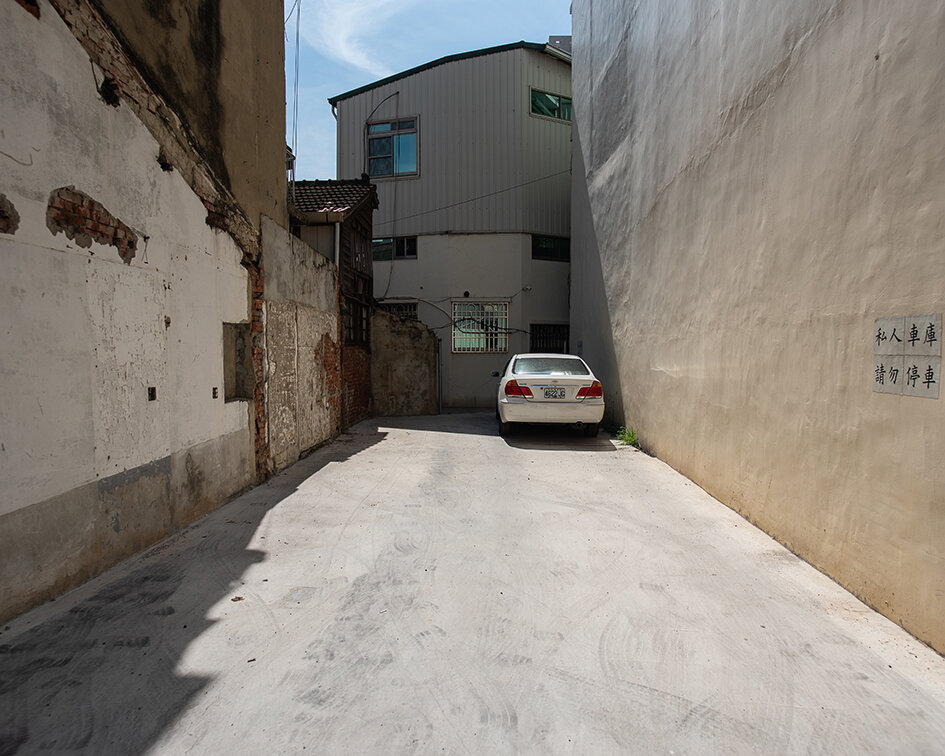






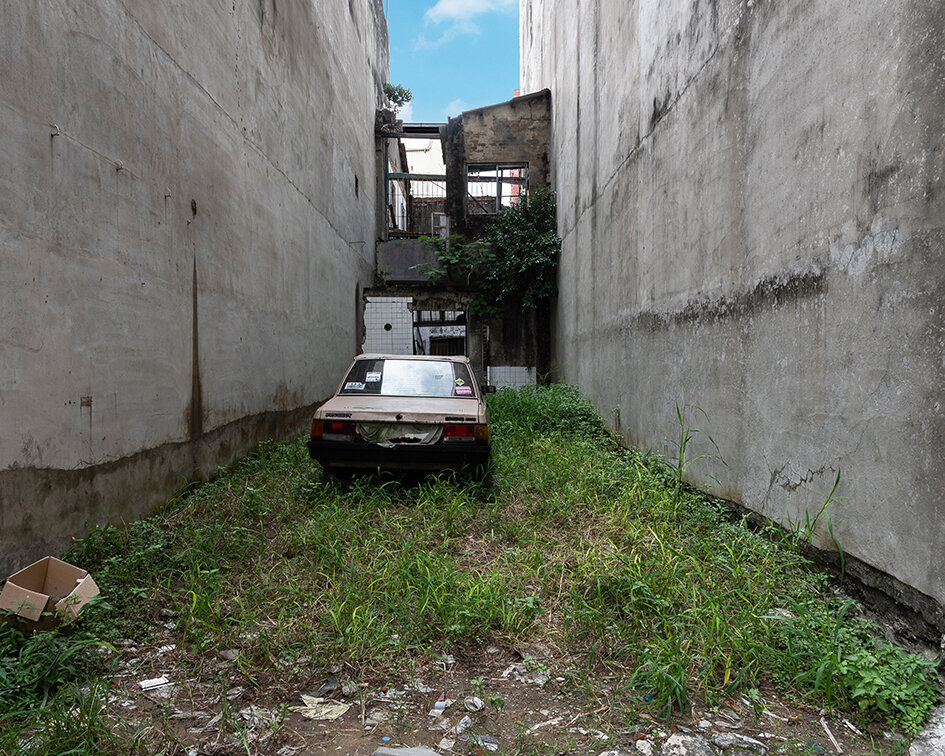




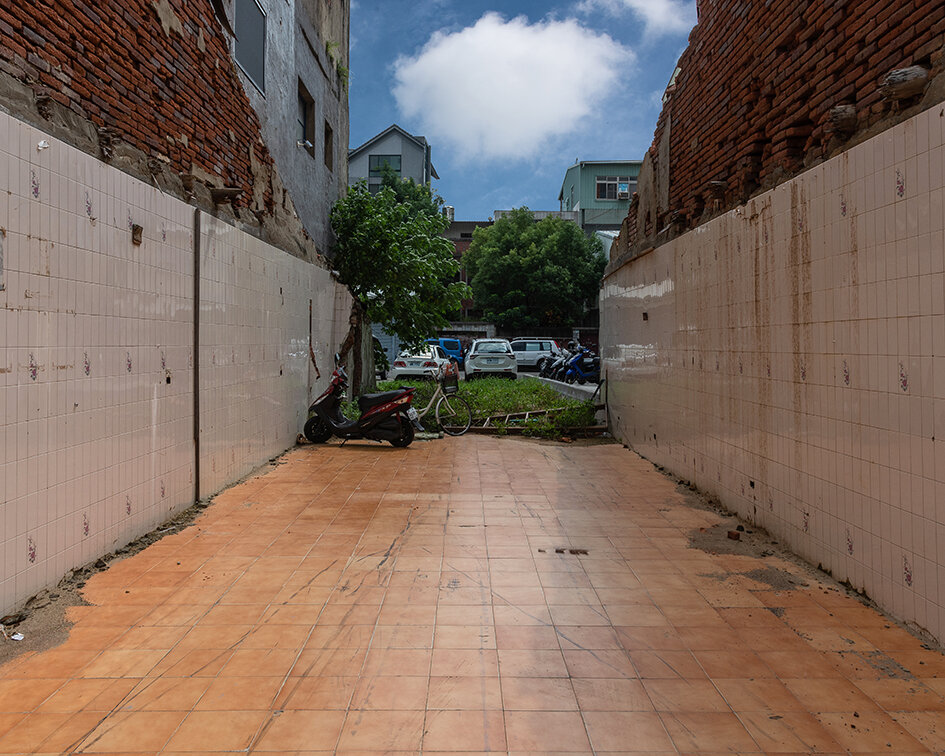


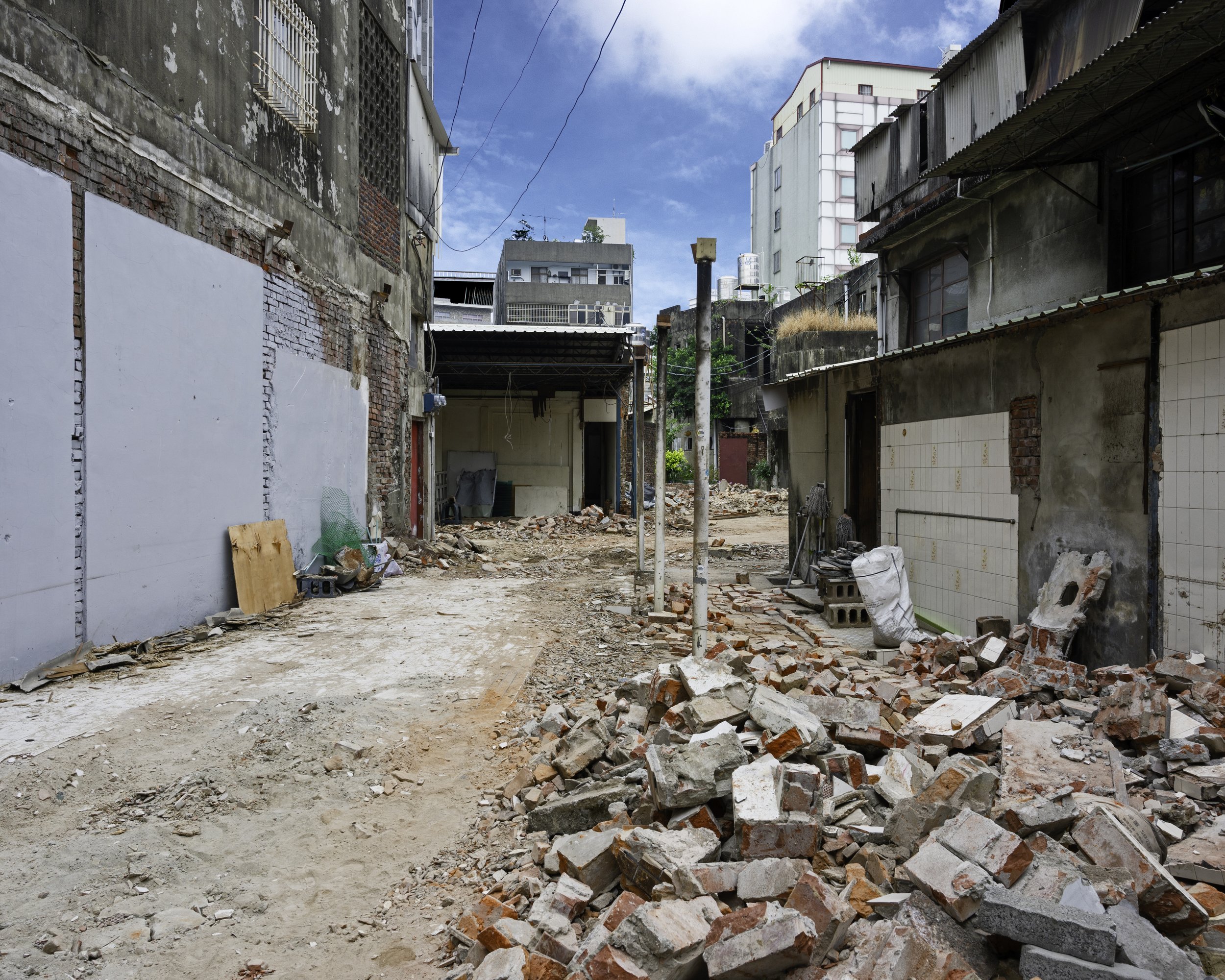
Exhibition
[...] そこで、一体家族というのはどういうものなのかと常に考えている。血縁があっても、全く親しくないことも少なくない。血の繋がりのない人でも、自分の家族になることができ、さらに新たな命を育むこともできるのではないだろうか。 私にとって本当の家族とは、血縁によるものではなく、心の繋がりが最も大切な基準である。どんなに離れていても、触れる肉体が亡くなったとしても、心の繋がりがあれば安心でき、言葉がなくてもお互いにコミュニケーションができ、どんなに広い世界にいても、心強くしてくれる存在だと思っている。だから、いつかこのような自分の家族を作りたいものだ。
[...] 最初父の影響で写真を撮る趣味を持つようになり、撮れば撮るほど、上手な作品が増えていった。時々、ある写真を見て思い出す。まるで、その人の笑顔はまだ輝いており、空気の匂いもはっきり嗅げるようだ。特に母の遺品を片付けていたとき、まだ幼い自分と両親の写真を見つけ、一体記憶とはどういうものなのかと自分に問いかけていた。
[...] 旅した場所も好きな人の姿も、勝手に自分のものにすることはできないからこそ、一枚の写真でも常に身につけていたら、まるで自分との繋がりがあったような気がする。写真を通じて、忘れない思い出を証明できるだろう。
やはり実物だけではなく一番大切なのは私たちの積み重ねてきた記憶だ。
Place M, Shinjuku Tokyo, Japan
By photographing the vacant lots which appeared after demolished old buildings in Tainan, the oldest city of Taiwan, I would like to share my understanding and image of “home” and my subtle feelings due to the sense of emptiness and regret I felt in various stage of my life. These empty lots also represent my mixed feeling of reminisce about my no longer existing family and home, and expectation of building my own family in the future. Through this work, I would like to express my interpretation and questions about the essence and definition of so-called abstract “family” and concrete “home (house)”. With the help of these incoherent scenes caused by the contrast between the vacant lots and the surrounding buildings, I would like to discuss a wider range of issues such as sense of belonging and the connection to place, and the balance between passed on memories of the local people and the developments of economy. Furthermore, I would like to reflect and imagine the future of us people who live on the same earth.
For my homeland, Taiwan.
台湾最古の都市である台南でとある古い建物が取り壊された後に残された空っぽの跡地を撮影しました。この撮影を通じて、私が思い描く「家」という場所、そして私自身が大人になるにつれて節々で感じた虚無感や後悔といった感情を表現したいと考えました。 この空っぽの土地は、今は亡き私自身の両親や育った家を彷彿とさせると同時に自分自身の家族を築くことへの期待感も入り混じった複雑な心情を代弁してくれています。この作品を通して、抽象的な「家族」と具体的な「家(建物)」という二つの概念の本質と定義について私の考察と疑問をお伝えできればと思います。 古い建物が取り壊されてできた空っぽの土地と周辺に佇む建物によって引き起こされる対比的なシーンを撮影することで、人々の地域への帰属意識や繋がり、そこに刻まれ続けてきた歴史と経済成長とのバランスといったより大きなスケールのメッセージを伝えたいと思います。更には同じ地球に住む我々人類の将来像についても想像を膨らませることができるのではないでしょうか。
私の故郷、台湾へ。
藉由紀錄台灣最古老的城市—台南老城區裡因為被拆除所留下的閒置地塊,我想闡述自己關於自己成長過程中對於「家」的理解與想像,以及對於生命各階段的缺憾與內心的反芻。 情感上,追憶我已經不存在的原生家庭,表達內心的遺憾與期待。也藉由這個作品,想提出我對於抽象的家族與具體的家的意義的質問與觀察。 理智上,藉由這些空地與周圍環境的對話所產生的不協調畫面,我也想藉此討論一個更大範圍,關於人的歸屬感與土地的連結,鄉土歷史的延續與經濟發展的平衡,並反省並想像在同一片土地上共同生活的我們的未來。
給我的故鄉台灣。




